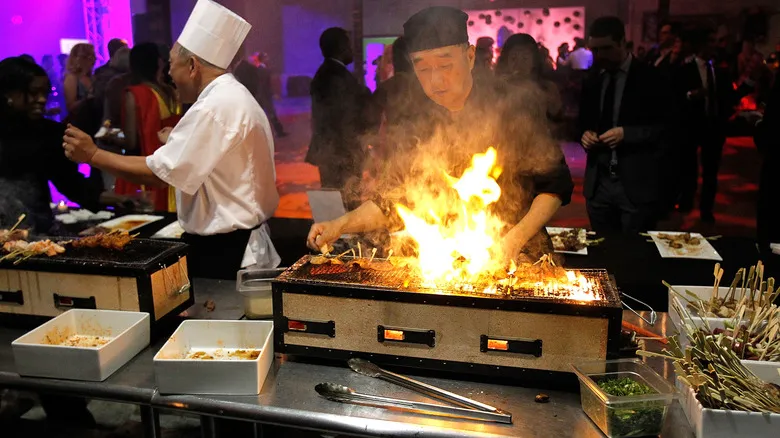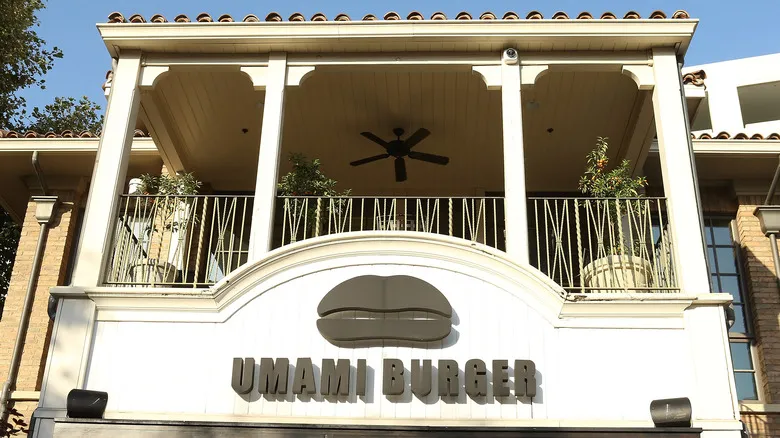Umami Burger made waves with its focus on flavor

Adam Fleischman experienced an "aha!" moment that inspired the idea for Umami Burger while enjoying an In-N-Out Double Double, a West Coast burger adored by celebrity food enthusiasts like Anthony Bourdain. He recognized that the irresistible flavor of these burgers was the same as that found in key elements of Asian cuisine, such as fish sauce and MSG, as well as in sharp, aged cheeses: umami.
The term "umami" was first introduced in 1908 by Japanese chemist Kikunae Ikeda, who identified that foods rich in the amino acid glutamate possessed a distinct savoriness. In 2002, scientists discovered specific L-glutamate receptors on the human tongue, leading to umami being recognized by the scientific community as the "fifth taste," alongside salty, sweet, sour, and bitter. Inspired by the profitable potential of emphasizing this flavor in fast food, Fleischman aimed to create a menu centered around umami. The resulting burgers featured ingredients like soy sauce, dried fish heads, porcini mushrooms, and Parmesan to amplify their umami profile.
Within just two years of its launch, Umami Burger had established five bustling locations in Los Angeles, along with one in San Francisco, and secured significant financial support from SBE Entertainment Group. According to the Los Angeles Times, the plan was to expand by opening an additional 35 locations nationwide by 2014, and initially, that goal appeared attainable. The chain distinguished itself from nostalgia-driven competitors through enthusiastic endorsements from celebrity chefs, high-profile collaborations with Hollywood stars, and a unique, chef-inspired concept, which temporarily boosted its popularity.
Locations dwindled as trends shifted

Once a rising star in the culinary scene, our search for an Umami Burger location today yielded limited results. The brand's website and Instagram redirect to a third-party ordering platform, GO by Citizens, which shows no available locations. According to Yelp and Google Reviews, all Umami Burger locations in the Los Angeles area, except for the airport outlet, have closed, despite the city being the brand's original market. However, the chain still operates internationally in Paris and Japan, as well as at food markets in New York and Atlanta.
What led to the dramatic decline of the Umami brand? Former patrons attribute it to overexpansion and a subsequent decline in quality. In its early days, founder Adam Fleischman expressed to LA Magazine his desire to avoid "taking any shortcuts," aiming instead for a process that was "longer and harder." Yet, when restaurant chains grow rapidly, it becomes nearly impossible to uphold such a commitment to meticulous preparation and high-quality ingredients, particularly under the profit-driven pressures from shareholders.
Shifting trends in the food industry have also contributed to this decline. As some food writers have observed, the current burger trend has shifted away from gourmet creations toward simpler smash burgers. With rising beef prices and shrinking profit margins, upscale restaurants often find themselves losing money by including burgers on their menus, which helps explain this transition. In an industry grappling with inflation, it remains uncertain whether Umami Burger's lavish interpretation of an American classic can ever stage a comeback.
Recommended

The Origin Of Hibachi Restaurants Dates Back To Ancient Japan

Why The Flavor Of Blue Moon Ice Cream Is Still A Mystery

The Folklore Behind Stroopwafel, The Netherlands' Most Iconic Treat

The Mysterious History Of Vietnamese Pho
Next up

